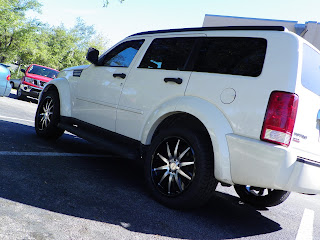2012 Fiat 500 Abarth
The amped-up 500 we've been waiting for.
Just one year ago at the Los Angeles auto show, Fiat announced its official reentry into our country with the debut of the U.S.-spec 500. Since then, the brand has added the pseudo convertible 500C, but sales of all Cinquecentos have failed to impress. You might say they could use a little boost, so what better time to introduce a hotter turbocharged variant to our shores? The 2012 500 Abarth has been officially confirmed to arrive at the Los Angeles auto show.
For those not familiar with the current-gen 500 Abarth, you must know that it’s not new. First introduced to Europe in 2008, the 500 Abarth is an absolute hoot to drive. The regular 500’s wheezy 101-hp, 1.4-liter MultiAir four-cylinder gets boosted with a turbocharger, and tuned to make 133 hp in basic tune or 170 in the Esseesse version—say “SS,”and it stands for “supersport.” Which tune will we get? Well, Fiat isn’t talking yet, but we think it’s pretty safe to figure on 170 hp. This is America, after all: Go big or go back to Italy. (Abarth also makes the 180-plus-hp 695 Competizione, but it’s a limited-edition special.)
But the 500 Abarth is not just about motor. Born from a philosophy of “small but wicked” coined by company founder Karl Abarth, its mechanical modifications also bring a lot to the table, at least in Europe. We don’t yet know exactly how our car’s chassis will be spec’d—Fiat only says that the car is aimed at driving purists and track-day enthusiasts with an Abarth-tuned suspension and brakes, and “technology features not traditionally included on a small car.” The Fiat folks do add, however, that our version will “stay true” to the Euro model. That should mean our Abarth will include stiffer springs and shocks and a brake-based torque-control system to help mitigate understeer.
Aesthetically, the cutie-pie face of the base 500 is dialed up with more aggression. The Abarth’s front fascia has a larger intake opening, accented by a subtle chin spoiler. There are new rocker extensions and the rear bumper hosts a diffuser with dual exhaust pipes. Other unique exterior items include a roof-mounted spoiler, red brake calipers and mirror caps, Abarth’s signature scorpion logos and decals, and a set of larger, more-sinister wheels.
We haven’t received a peek at the U.S. car’s interior yet, but it’ll likely carry over the sporty seats, aluminum pedals, fat steering wheel, and boost gauge found in Continental Abarths. Our answer will come soon enough, and the car will go on sale in the first half of 2012.

















































